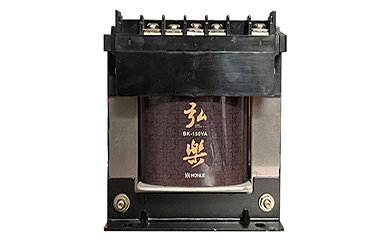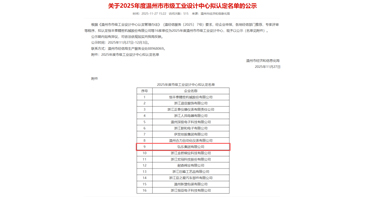Advantages and Disadvantages of Low Voltage Transformer

 Site Editor
Site EditorLow voltage transformers play a crucial role in various electrical systems, and understanding their advantages and disadvantages is essential for making informed decisions in electrical engineering and power distribution applications.

Advantages
-
Enhanced Safety
-
Low voltage transformers significantly reduce the risk of electric shock. By stepping down high voltages to lower levels, such as converting 220V or 110V mains voltage to a safer range like 12V, 24V, or 48V, the potential harm to humans and equipment in case of accidental contact is minimized. For example, in household electronics and lighting systems, the use of low voltage transformers makes it safer for users to handle and install electrical components. In industrial settings, low voltage power supplies for control circuits and sensors help protect workers from dangerous high voltages.
-
The insulation requirements for low voltage systems are less stringent compared to high voltage ones. This simplifies the design and manufacturing process of electrical equipment and reduces the cost of insulation materials. It also decreases the likelihood of insulation breakdown and associated electrical faults.
-
-
Versatility and Compatibility
-
Low voltage transformers can be designed to provide a wide range of output voltages and power ratings. This versatility allows them to be used in numerous applications, from powering small electronic devices like mobile phone chargers and laptop adapters to supplying power to larger industrial equipment such as motors and control systems. They can be customized to meet the specific voltage and current requirements of different loads, making them highly adaptable in various electrical setups.
-
They are compatible with different types of loads, including resistive, inductive, and capacitive loads. Whether it's a simple incandescent light bulb (resistive load), a motor (inductive load), or a power factor correction capacitor (capacitive load), a low voltage transformer can usually provide the appropriate power supply.
-
-
Improved Power Quality
-
Low voltage transformers can help in voltage regulation. They can compensate for voltage drops in long electrical lines or due to heavy loads. By maintaining a relatively stable output voltage, they ensure that electrical equipment operates within its designed voltage range, which improves the overall performance and lifespan of the equipment. For example, in a building's electrical distribution system, low voltage transformers at each floor can help maintain a consistent voltage supply to the various electrical outlets and appliances, reducing the impact of voltage fluctuations on sensitive electronics like computers and televisions.
-
They can also provide isolation between the input and output circuits. This isolation helps prevent electrical noise and interference from the mains power supply from affecting the sensitive electronic components of the load. It also protects the mains power grid from any potential faults or disturbances generated by the load side, improving the overall reliability and quality of the power supply.
-
-
Cost-Effectiveness in Some Applications
-
For low power applications, low voltage transformers can be a cost-effective solution. The materials and manufacturing processes for low voltage transformers are generally less expensive compared to high voltage transformers. For example, in a small-scale solar power system used to charge a 12V battery for a garden light or a small security camera, a low voltage transformer can be an economical choice to step down the solar panel voltage to the appropriate level for battery charging.
-
Their simplicity in design and operation often leads to lower maintenance costs. There are fewer components that can fail compared to more complex high voltage systems, and the repair or replacement of a low voltage transformer is usually more straightforward and less costly.
-
Disadvantages
-
Power Losses
-
Low voltage transformers are not 100% efficient, and there are always some power losses during the transformation process. These losses occur mainly due to resistance in the windings (copper losses) and magnetic losses in the core (eddy current losses and hysteresis losses). The power loss is proportional to the square of the current flowing through the windings, so as the load current increases, the power loss can become significant. For example, in a large industrial plant with multiple low voltage transformers supplying power to various machines, the cumulative power losses can add up, resulting in increased energy consumption and higher operating costs.
-
To reduce these losses, larger and more expensive transformers with better quality materials (such as low-resistance copper windings and high-permeability core materials) may be required, which increases the initial investment cost.
-
-
Size and Weight
-
For a given power rating, low voltage transformers tend to be larger and heavier than high voltage transformers. This is because the current in the low voltage side is relatively high, and to handle this current, the windings need to have a larger cross-sectional area. The larger size and weight can pose challenges in terms of installation space and transportation. For example, in a crowded electrical equipment room, finding sufficient space to install a bulky low voltage transformer can be difficult. In portable or mobile applications, the weight of the transformer can limit its usability.
-
The need for larger enclosures and mounting structures due to the size and weight also adds to the overall cost of the installation.
-
-
Limited Voltage Step-Up Capability
-
While low voltage transformers are excellent at stepping down voltages, their ability to step up voltages is limited. In some applications where voltage boosting is required, such as in certain renewable energy systems or for long-distance power transmission, low voltage transformers may not be suitable. For example, in a wind turbine power generation system, if the generated low voltage needs to be stepped up to a high voltage for efficient transmission to the grid, a dedicated high voltage step-up transformer is needed rather than a low voltage transformer.
-
-
Voltage Drop with Distance
-
When low voltage power is transmitted over long distances, there is a significant voltage drop due to the resistance of the conductors. This means that the voltage at the load end may be much lower than the output voltage of the transformer, especially for high current loads. To overcome this, either thicker and more expensive conductors need to be used or additional voltage regulation equipment needs to be installed, both of which increase the cost and complexity of the electrical system. For example, in a large factory with a centralized low voltage distribution system, if the distance from the transformer to the farthest load is considerable, maintaining a proper voltage supply to all the equipment can be a challenge.
-
In conclusion, low voltage transformers have many advantages that make them suitable for a wide range of applications, especially in situations where safety, versatility, and power quality are important. However, their disadvantages, such as power losses, size and weight issues, limited voltage step-up ability, and voltage drop with distance, also need to be carefully considered when designing and implementing electrical systems. The choice of using a low voltage transformer should be based on a comprehensive evaluation of the specific requirements and constraints of the application.







